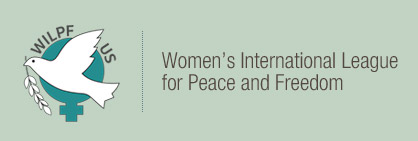Poverty=Death: Join the PPC March on June 29
Published on May, 49 2024
By Rev. Rowan Fairgrove
EPs WILPF4PPC Liaison and WILPF San Jose
May 2024
Editor’s note: This article is originally from the Spring/Summer 2024 issue of Peace & Freedom magazine. Read the entire issue here.
Rev. Dr. Martin Luther King, Jr and other civil rights leaders launched a Poor People’s Campaign (PPC) in 1968 to tackle what he called the “Triplets of Evil — racism, poverty and militarism.” Fifty years later, activists revived this multiracial fusion movement to carry on the fight against these injustices, as well as the growing scourge of ecological devastation and the false narrative of religious nationalism. We call upon our society to see the predicaments of the most vulnerable among us and to halt the destruction of America’s moral vision. People should not be dying from poverty in the richest nation on earth.
One of the hallmarks of the modern Poor People’s Campaign: A National Call for Moral Revival is an appreciation of data. Bishop William J. Barber II frequently reminds us, “It’s bad to be loud and wrong.” Over the years, the Poor People’s Campaign has partnered with the Economic Policy Institute, the Institute for Policy Studies and with other organizations and scholars to help us be loud and right.1
A Major Risk Factor for Death
In 2023, at the Moral Poverty Action Congress held in Washington, DC, a panel of economists and public health policy practitioners was held speaking on poverty and hunger in America. They discussed a variety of issues, including the causes of poverty, the impact of the COVID-19 pandemic on low-income and minority populations, economic drivers of inflation, and how best to mitigate poverty in the country.2
One of the most electrifying findings came from the work of Professor David Brady of the School of Public Policy at UC–Riverside (UCR), et al.3 Poverty can be considered the fourth leading cause of death in the United States after heart disease, cancer and smoking. The UCR researchers found that poor people had roughly the same survival rates as wealthier people until they hit the age of 40, after which they died at a significantly higher rate than people with better incomes and resources. Dr Brady noted, “As a risk factor, poverty kills more people than Alzheimer’s, strokes and diabetes.” The report proposes that poverty should be considered “a major risk factor” for death. “No autopsy says poverty, but maybe it should,” Brady said.
These findings prompted Bishop Barber to suggest that low-wage jobs should come with a health warning, just like cigarettes and other things that can cause death. In conjunction with the Moral Poverty Action Congress, the Poor People’s Campaign and the Institute for Policy Studies updated the PPC Fact Sheets for the States and various topics. The Cost of Poverty Fact Sheet notes that raising the federal minimum wage from $7.25 to $15 per hour would put $328 billion into the hands of families and households, who will spend most of that back into the economy. Raising the minimum wage by just $2 could have prevented more than 57,000 suicides from 1990 to 2015.
The Fair Labor Standards Act (FLSA) sets the federal minimum hourly wage at $7.25/hr, which for full time (40 hr/ week) yields $15,078.84 annually. Some states have a higher minimum wage, two (Georgia and Wyoming) have a lower minimum. Employees under 20 years old have a minimum wage of $4.25/hr. Tipped workers minimum is $2.13/hr. and was last updated in 1992! There are various categories — agricultural workers, domestic servants, people working for commission, workers with disabilities, and some small business employees — that can be paid below minimum wage (subminimum wage). Congress has not increased the minimum since 2009. According to the Bureau of Labor Statistics inflation calculator it takes $181.73 December 2023 dollars to buy what $100 bought in 2009. So you need almost twice as much today to survive economically and yet wages have not risen.
We Need Accurate Poverty Measures
How we define and measure poverty has real consequences in people’s lives. In the early 1960s, the US Government established the first Federal Poverty Line, a threshold used to establish who was considered poor. It was based on the Department of Agriculture’s assessment of the least amount of money needed to feed a family in 1955 multiplied by three. People whose income falls under their threshold are considered poor under this Official Poverty Measure (OPM). It is updated only by being tied to the consumer price index but it doesn’t vary by city or region since it is a measure of how many dollars are supporting a particular size household.
Under OPM in 2021 the Federal Poverty Line was $12,880 for a single person under age 65 and $26,500 for a household of four. So that person making $7.25 an hour is thought not to be in poverty with their $15,078.84 annually! In 2011 the Census Bureau created the Supplemental Poverty Measure (SPM). Even the Census Bureau they doesn’t think $15,078.84 is an adequate income.4
So, despite the substantial increases in our basic living expenses (housing, transportation, food, utilities and child care), the way we calculate the federal poverty line has not been adjusted, causing millions of Americans experiencing poverty to fall through the ever-growing holes in our social net safety programs, most of which are “means tested.” This includes food security programs like WIC, SNAP and school breakfast and lunch programs; rural housing assistance, public housing and emergency shelters; community services and social services block grants; Medicare, Medicaid and the Children’s Health Insurance Program; energy programs for low-income families and weatherization; educational programs like Head Start and support for elementary, secondary and Indian and tribal schools; taxpayer clinics; youth jobs programs and more.
Without accurate measures of who is poor, social safety programs are underfunded and unavailable to many who need them. A measure that is too low results in eligibility standards that leave out significant numbers of people who are in need of such programs and it also means these programs are not funded to meet that need.
The Cost of Poverty Fact Sheet notes that “$1 billion in SNAP benefits creates $1.70 billion in economic growth. In rural areas, SNAP benefits created jobs in counties where benefits were received and in neighboring counties, creating more jobs per dollar than an investment in the military.”
We need a cost-of-living poverty measure that accurately assesses what it takes for all people to have a dignified life wherever they happen to live. “All people” emphatically includes people living alone, single parents, elders, two-parent households with few or lots of children and other household types. An accurate poverty measure would not only be good for the people but for the nation as well.5
To bring equity, we need to lift wages and improve living conditions to make a better life for everyone in our country. The Poor People’s Campaign is leaning into being “a movement that votes.” On June 29, 2024, we will be back in the US Capitol for another Mass Poor Peoples and Low-Wage Workers’ Assembly and Moral March on Washington and to the Polls. It is time to put our congress members and senators on notice that we are watching them and we vote. We need a Third Reconstruction Agenda to end poverty and low wages from the bottom up!
WILPF is a national partner of the Poor People’s Campaign. I hope that our members were in their state capitols on March 2, and that you will join us in DC for the June 29 march. Even if you can’t come, please educate yourself about poverty and how we measure it, and advocate for change where you can. We have up to 800 people a day dying from poverty in this country and that just isn’t right.
Notes:
(1) A link to studies and fact sheets can be found on the PPC website at: www.poorpeoplescampaign.org/learn/.
(2) Poverty Kills: The Moral Mandate for Ending Poverty in America Panel on C-SPAN.
(3) Dr. Brady spoke from the JAMA article, but the subsequent Science Advance article has the figures he showed us. Both articles can be found at: https://bradydave.wordpress.com/publications/
(4) See the Census Bureau’s Measuring America info page.
(5) To get an idea of what a living wage is in your area, both Economic Policy Institute and MIT have living wage/budget calculators:



